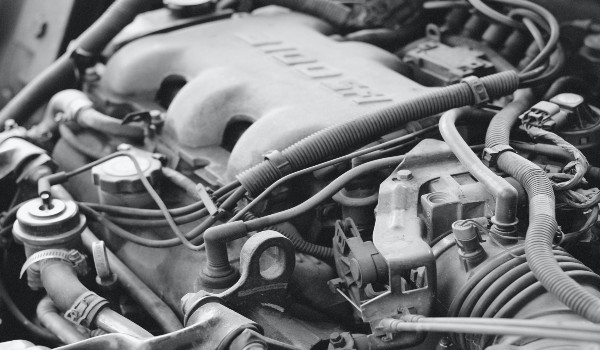The UK is banning all new petrol and diesel cars and vans from 2040, driving the need for smaller and more efficient engines. Lightweighting is shaping the manufacturing process, with ICE downsizing posing both innovation and new challenges in the field of high precision casting.
In this article, we summarize thermal efficiency in regards to ICE design, alloy materials, additive manufacturing, and more:
lIGHTWEIGHTING
The move to downsized engines is driven by the need for smaller power units, which contributes to vital lightweighting strategies at the forefront of most automotive manufacturer’s goals. While this sounds simple in theory, downsizing in ICE creates a number of challenges.
A key challenge associated with downsizing is the need for increased specific output with the consequence of increased operating temperature. This may approach 3000C in highly stressed areas of the cylinder head.
An additional challenge for casting specialists lies in the realisation of engineers’ strategies to extract every ounce of power from the fuel. Improving the thermal efficiency of engines now involves a series of innovative techniques, new materials, and new technologies, which have improved the energy transfer percentage from fuel tank to crank shaft in recent years.
ICE Thermal Efficiency
Improvements in thermal efficiency have been driven by significant leaps in design, focusing on high-speed combustion, intake ports, variable valve timing, and cooled exhaust gas recirculation. This have allowed G&W to achieve thermal efficiencies within the 40-50 per cent range.
Read More:
Innovation in energy for transport
EV components: surviving the valley of death with sand casting
Are ICE parts harder to produce than EV powertrain parts?
traditional casting processes
However, these improvements in ICE performance create huge challenges for casting engineers. The higher specific load associated with downsizing creates unwanted heat, causing problems for some castings.
Additionally, the complexity of water jackets and cooling systems pushes traditional casting processes to the absolute limit.
At G&W, this has led to greater collaboration with OEMs’ engine development teams, exploring new alloys, coatings, production processes and additive manufacturing. This collaboration across the automotive industry will be key in delivering a new generation of engines that are operating in the 40-50% thermal efficiency range.
Alloy materials and development
Given the increased temperatures created by smaller engines, traditional alloys of aluminium – notably used in the block and head – are being developed. These are enhancement of existing alloys, developed to enhance engine performance at higher temperatures.
Other materials will be important in increasing thermal efficiency. These include:
- Insulating materials: ceramics, inconel alloys and additive manufacturing will create complex castings within castings.
- Advanced compound engines: ones that minimise heat losses in the exhaust transfer process, enabling thermal efficiencies of circa 50% without the use of turbochargers.
- Heavy ferrous alloys: while it might appear that heavy ferrous alloys are out of the race where thermal efficiency is concerned, you’d be wrong. Engines with high outputs running at high temperatures may need to move from aluminium alloys, but there’s a potential role for iron and compacted graphite alloys.
While these alloys are heavier and may seem at odds with the goal of lightweighting, these materials allow smaller, whole engine packages to be made - enabling the creation of smaller, lighter vehicles.
This was the concept behind the Ford F150 V6 block G&W developed engine castings for. Despite the heavier casting, the OEM was able to design a smaller engine, which led to a lighter and finished vehicle.
Additive manufacturing
Grainger & Worrall was one of the first European manufacturers to use 3D printing to improve the quality of commercial sand castings. It was initially utilised for rapid prototyping, but the technology is now being harnessed to enhance the thermal efficiency of engines.
Over the last 5 years, GW has invested significantly in 3D technology, financing £2 million into hot and cold cure additive manufacturing machines to use for their high-performance client base.
Started as a one-off investment for motorsport clients, GW has integrated it into their casting process for mainstream use. 3D printing allows intricate shapes in sand and resin to be printed, opening up new potential for water jackets, ducts, and pipework that was not previously thought doable. All of this contributes to tackle the challenge of thermal efficiency.
Overview
Technological change is being fuelled by the anticipated demise of internal combustion engines. Thermal efficiency has improved by almost 30% in recent years, in the need to extract more energy from less fuel while reducing carbon emissions.
GW is adopting a broad range of technology to face the challenge of thermal efficiency. Dedicated to operating at the forefront of engineering, they are taking huge strides in engine performance, using additive manufacturing, new materials and enhanced alloys to open up new potential.
Want to find out more about the casting innovation in manufacturing electric vehicles? Read our ebook Making EV Components with Sand Casting, just click on the button below.
Related Posts
Electric vehicle metal innovation: It's not all about battery technology
While much of the focus of materials used in electric vehicles remains on battery technology, metal...
Meet Tom Bannister: Engineering Manager NPI
In our latest video series Staff Stories, we've spent time with different people throughout the...
GW Staff Stories: Meet Jordan Thompson, Materials Engineer
In our latest video series Staff Stories, we've spent time with different people throughout the...
 Get in touch
Get in touch

